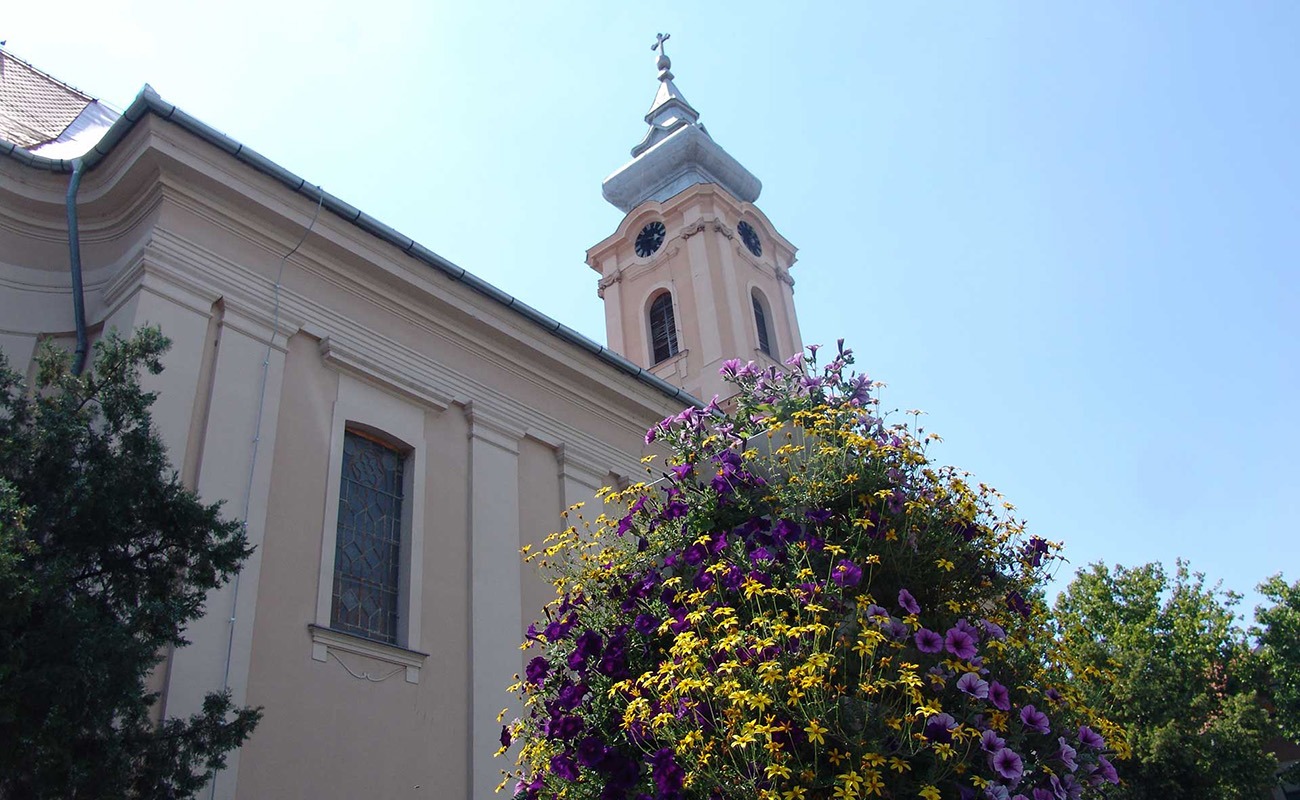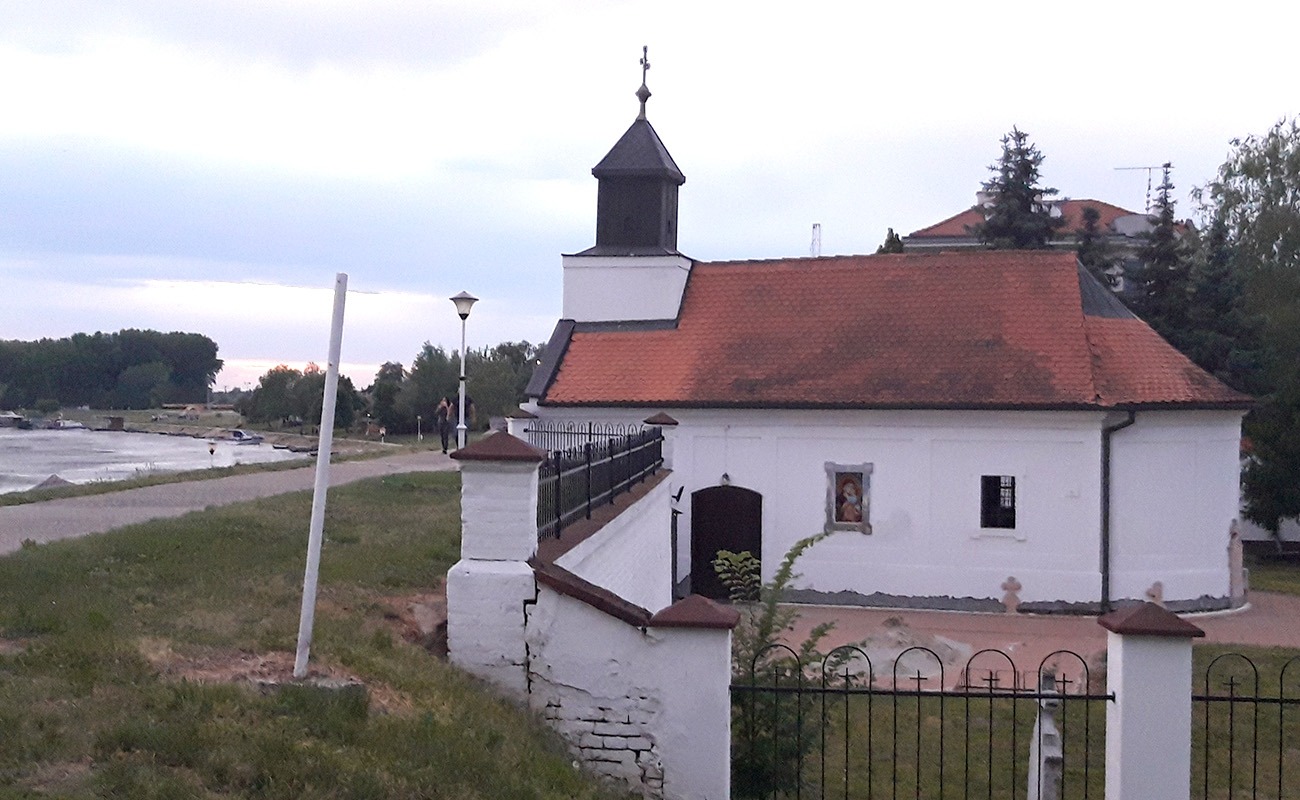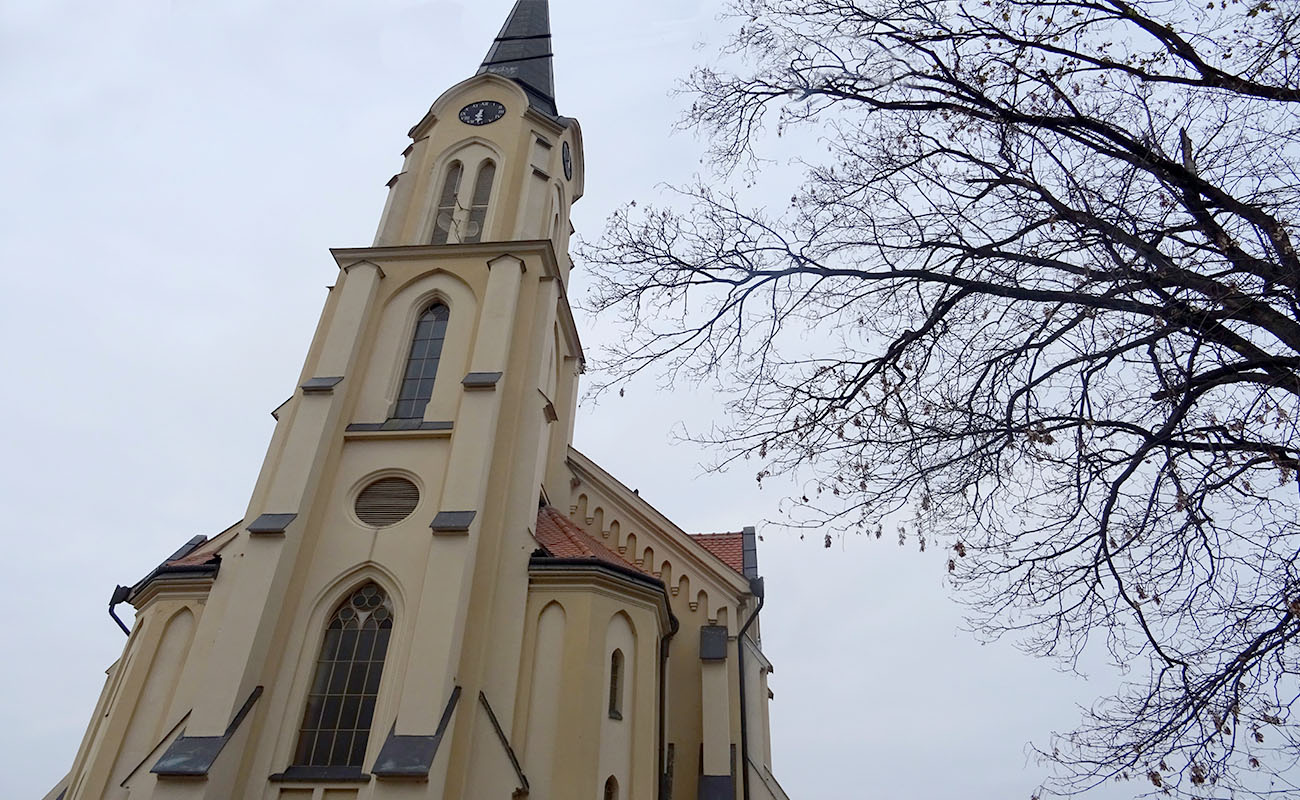St. John the Forerunner Orthodox Church Novi Bečej – Vranjevo
The first orthodox church in Vranjevo was founded in 1743, but its location was unexplored. The same year, Tamiš-Lipov Metropolitan Georgije Popović consecrated the antimins, made for the service in St.John the Forerunner temple in Vranjevo moat.
This antimis is now in the treasury of the Temisvar diocese. What is certain is that Serbs, frontiersmen who came from Bačka in 1752, built the orthodox church in the center of Vranjevo which is in the same place today. It was dedicated to St. John the Forerunner and its antimis was consecrated by Bishop Georgije Popović.
The first church was made from pise, “it had four windows and two simple doors, no arch except in the altar just above the communion table, covered with bulrush, it had a bell, churchyard unfenced…no Temple, only four icons remained…”
Stevan Nikolić, the priest, wrote: “This divine book named Holy Gospel that belonged to former church of Petrovo village was now given to the newly settled moat in Franjevo and to the St.John Forerunner church in 1752.”
Before that church, which was consecrated on 24th November in 1807 by Archpriest Jovan Jovanović. After that one made from pise, there was a church made from solid materials. Interior of the church was tiled with marble. Tables and chairs were made in 1825. There were 14 tables in the cantor’s stand, 60 in a man’s church and 47 in a woman’s church. People of Vranjevo asked for loan to buy bricks from magistracy in March, 1793. This church was smaller but it had its own iconostasis which pise church did not have.
Today church is actually the expended church built earlier. There’s a proof for this claim: in the north wall of the church there’s a chock facing “the table of mother of God”. According to the local stories, believers were bringing stones from the town of Bečej which was used for building foundation and a tower. The Bishop of Temisvar, Mr. Mojsej Putnik paid his visit to Vranjevo for the first time on 31st August, 1776 and that was the first archbishop visit to this temple. The church got the present look in 1807. It was built from solid material, 37m long, 15m wide and the tower is 44m high. The old iconostasis was moved into the new church and it stayed there until 1826. After that, the new iconostasis was made and the old one was sold to Bočar church for 300,00 forints. Unfortunately, it was sold for a pittance because it was worth as much as a new one. Archpries Vlaškalin wrote: “we paid 21.106,00 forints for paining the church and the icons, and making the iconostasis together with gilt, cost us 6865,00 forints.
He said that the icons were painted by Petar Čortanović from 1834 to 1836, but this information sholud be taken with caution considering the circumstances and the place of work and living of this painter in those years. The new iconostasis was probably painted by Jefimije Popović, a paiter from Veliki Bečkerek. The gilt was made by Franz Kolb. The gilt was made by Franz Kolb. We can read in the papers that the church tower was built by Leopold Reiden in 1861 for 15.837,00 forints. In 1903 the temple was renovated and the choir was made. The renovated church had four bells: the big one was 675kg heavy, made in Buda in 1791; the other was 350kg heavy, casted in Buda in 1789; the middle sized bell was 220kg heavy, casted also in Buda in 1788 and the small bell was 100kg heavy, casted in Vršac in 1845. During the First World War three bells (the other large bell, middle sized and the small one) were used for military purpose. After the war the new bells were bought and placed into the tower in 1931. Two bells were bought in the Belgrade Iron Foundry “Balkan” in 1921, and the third bell was the gift from retired teacher Mladen Belić. The ‘Only unity saves the Serbs’ coat of arms was made on the copper by a brazier Milan Jovanović from Novi Sad. In 1861 were bought Great Altar, baptistery and a washroom made from red marble. The same year on the day of Nativity of Mary, the first service was held on the Great Altar.
Antimins was consecrated by the Archbishop Dr.Georgije Letić on 13th October, 1906. On the day of great church holidays the believers were summoned to church with prangija. They were usually fired in the churchyard or in the center of Vranjevo on the crossroad in front of the orthodox church.
Today Vranjevo was proclaimed as a spatial cultural - historical unity together with this church and a catholic church, museum, old municipality building and other valuable culturally-historical places that make this part of Novi Bečej so special. St. John the Forerunner Orthodox Church Novi Bečej – Vranjevo Address: 61 Josif Marinković street Phone: 023/771-942 (make an appointment before visiting; on church holidays and days for church service)
Other sights

St. Clare Church

Monastery near the Tisa
